 July 30, 2020 John E. Ross, KD8IDJ, Editor
| ||||||
ARRL Board Meets in Remote Session Due to travel and gathering restrictions in place because of the coronavirus pandemic, the ARRL Board of Directors met on Friday, July 17, in a remote session, using the Zoom videoconferencing platform. During this session, the Board took the following actions:
The meeting ended with the Board recessing until a future, as-yet-undetermined date, when the meeting will be concluded. That is expected to be in 4 to 5 weeks, depending on circumstances and the ability to arrange a suitable meeting site. Minutes will be released once the meeting is concluded. Traffic-Handling Webinar Launches Ham Radio Learning Series A live presentation from ARRL North Texas Section Traffic Manager Aaron Hulett, K8AMH, inaugurated the new ARRL Learning Network on Tuesday, July 28. The webinar series features 30-minute presentations from experienced members covering a variety of amateur radio topics and interests. Hulett's webinar, "Relay Stations and the Art of Traffic Handling," introduced techniques and skills "Aaron hit a home run," said Bob Inderbitzen, NQ1R, ARRL Product Development Manager and moderator for Hulett's webinar. "His presentation was the perfect balance of knowledge-sharing and enthusiasm that will surely motivate other members to try their hand at traffic handling." A recording of the webinar is available for members to view. The webinars are hosted using GoToWebinar. Members are invited to ask questions during each webinar, and a 15-minute Q&A period follows each presentation for those who can participate longer. A running list of upcoming live presentations is available below and on the ARRL Learning Network web page. Prospective attendees may register on that same page. ARRL members must first log into the ARRL website. Inderbitzen encourages other members to be considered for future ARRL Learning Network webinars by inviting them to complete a Call for Speakers form. "It's all about members helping members. What better way to grow greater participation in amateur radio!" Schedule of Upcoming Webinars Fun with Digital Signal Modes FT4 and FT8 Anthony Luscre, K8ZT Thursday, July 30, 2020, 12:30 PM PDT / 3:30 PM EDT (1930 UTC) HF Wire Antennas George Cooley, NG7A, ARRL Life Member Thursday, August 6, 2020, 12:30 PM PDT / 3:30 PM EDT (1930 UTC) Introduction to Digital FM Modes Korey Chandler, Sr., WA5RR Tuesday, August 11, 2020, 5 PM PDT / 8 PM EDT (0000 UTC on Wednesday, August 12) Introduction to Computer Logging Steven Lott Smith, KG5VK Thursday, August 13, 2020, 12:30 PM PDT / 3:30 PM EDT (1930 UTC) Capture the Magic of 6 Meters Jim Wilson, K5ND Tuesday, August 18, 2020, 10 AM PDT / 1 PM EDT (1700 UTC) The Sport of Finding Hidden Transmitters on Foot Robert Frey, WA6EZV, ARRL Amateur Radio Direction Finding Committee Thursday, August 20, 2020, 12:30 PM PDT / 3:30 PM EDT (1930 UTC) Propagation as a Matter of Life or Death On May 25, 1928, the airship Dirigible Italia crashed on pack ice northeast of the Svalbard Islands on the return leg of a trip to survey the North Pole with 16 passengers and crew on board. At impact, one person was killed, and the cabin carrying nine people separated from the hydrogen-filled airframe. Six crew members on the dirigible structure were never seen again, after the airship again became airborne. The survivors on the icepack turned to their 5 W wireless set, a one-tube Hartley oscillator, to put out The recently published article, "The Shipwreck of the Airship Dirigibile Italia in the 1928 Polar Venture: A Retrospective Analysis of the Ionospheric and Geomagnetic Conditions," provides the gripping historical context and tries to explain why it was so difficult to establish communication for a rescue. Drawing from sources of geophysical data collected at the time, and using modern theories of propagation -- including some directly derived from amateur radio observations -- the authors present data including sunspot count, magnetic flux, and F2 layer height, and take the reader through an analysis of the sky-wave and ground-wave paths. Ultimately, the authors suggest, ground-wave path losses likely exceeded 100 dB, leaving only skywave as a potential link. In the first few days after the crash, the ionospheric path was impossible at the frequencies being used -- 9.1 and 9.4 MHz -- due to disturbed conditions. It was only after conditions had settled that communication became possible, and it only became reliable when a lower frequency was chosen. Even after communication was established, 15 rescuers were lost in the search and recovery operations, including Roald Amundsen, Norway's famed polar explorer. Finally, on July 12, 1928, 48 days after the initial crash, a Russian icebreaker was able to reach and rescue the survivors. -- Thanks to The ARRL Contest Update ARRL Podcasts Schedule
The On the Air and Eclectic Tech podcasts are sponsored by Icom. Both podcasts are available on iTunes (iOS) and Stitcher (Android), as well as on Blubrry -- On the Air | Eclectic Tech. Hurricane Watch Net Activates for Hurricane Hanna The Hurricane Watch Net (HWN) activated on July 25 for Hurricane Hanna, the first hurricane of the Atlantic hurricane season. When the net activated, the storm was poised to make landfall along the Gulf of Mexico as a Category 1 storm, with maximum sustained winds of 75 MPH. After it came ashore on the Texas coast, extensive property damage was reported in the Rio Grande Valley, the brunt of it south of Corpus Christi, which experienced storm-surge flooding and tropical storm winds. Areas to the south saw sustained hurricane-force winds. "The year 2020 has been a strange year in every way, and the weather is no different," HWN Manager Bobby Graves, KB5HAV, said last weekend. "Just a few hours ago, it looked as though we would be The net activated on 14.325 MHz -- its primary net frequency -- and operated simultaneously on 7.268 MHz. The HWN remained active for several hours, working in cooperation with WX4NHC at National Hurricane Center (NHC). HWN volunteers gather observed ground-truth weather data from the affected area. "We are also available to provide backup communication to official agencies such as emergency operations centers, Red Cross officials, and storm shelters in the affected area," Graves added. In addition, the HWN collects and reports significant damage and storm surge data to forecasters and FEMA officials stationed at the National Hurricane Center. Due to COVID-19 precautions, WX4NHC operators worked from their homes. FCC Fines HobbyKing Nearly $3 Million for Marketing Unauthorized Drone Transmitters The FCC has issued a Forfeiture Order (FO) calling for HobbyKing to pay a fine of $2,861,128 for marketing drone transmitters that do not comply with FCC rules. An FCC Enforcement Bureau investigation stemmed in part from a 2017 ARRL complaint that HobbyKing was selling drone transmitters that operated on amateur and non-amateur frequencies, in some instances marketing them as amateur radio equipment. The fine affirms the monetary penalty sought in a June 2018 FCC Notice of Apparent Liability (NAL). The FCC said its investigation found that dozens of devices marketed by the company transmitted in unauthorized radio frequency bands and, in some cases, operated at excessive power levels. "Such "We have fully considered HobbyKing's response to the NAL, which does not contest any facts and includes only a variety of legal arguments, none of which we find persuasive," the FCC said in the FO. "We therefore adopt the $2,861,128 forfeiture penalty proposed in the NAL." The FCC pointed out in the FO that it has previously made clear that "[d]evices used in the Amateur Radio Service do not require authorization prior to being imported into the United States, but devices for other services, including the CB service, require Commission approval." The FCC investigation found that 65 models of devices marketed by HobbyKing should have had FCC certification. Responding to the NAL, HobbyKing claimed to have ceased marketing the 65 models the FCC identified, but promised only to make "best efforts" not to market other noncompliant RF devices. Read more. The K7RA Solar Update Tad Cook, K7RA, Seattle, reports: Sunspots finally have returned! Currently, two sunspots are visible, both from new Solar Cycle 25. The daily sunspot number was 11 on July 21 - 27 and is currently 22. We've noticed an improvement in propagation recently, due to seasonal sporadic-E activity.
Total sunspot area covered 80 millionths of the solar disc on July 21, 120 millionths on July 22 -- 26, and the coverage on the following 3 days was 70, 50, and 85. Geomagnetic indicators were a bit more active, with average daily planetary A index rising from 3.9 to 6.7, while average daily mid-latitude indicators rose from 4.3 to 8.7. Predicted solar flux is 72 on July 30 - August 6; 68 on August 7 -- 22; 69 on August 23 -- 28, and 68 on August 29 - September 7. Predicted planetary A index is 5 on July 30 - August 23; 8 on August 24 -- 25, and 5 on August 26 - September 7. Sunspot numbers for July 23 - 29 were 11, 11, 11, 11, 11, 22, and 22, with a mean of 14.1. The 10.7-centimeter flux was 70.3, 69.5, 70.4, 71.4, 71.4, 71.8, and 72.6, with a mean of 71.1. Estimated planetary A indices were 4, 11, 15, 3, 4, 5, and 5, with a mean of 6.7. Middle latitude A index was 4, 13, 27, 3, 5, 5, and 4, with a mean of 8.7. A comprehensive K7RA Solar Update is posted Fridays on the ARRL website. For more information concerning radio propagation, visit the ARRL Technical Information Service, read "What the Numbers Mean...," and check out K9LA's Propagation Page. A propagation bulletin archive is available. For customizable propagation charts, visit the VOACAP Online for Ham Radio website. Share your reports and observations. Just Ahead in Radiosport
See the ARRL Contest Calendar for more information. For in-depth reporting on amateur radio contesting, subscribe to The ARRL Contest Update via your ARRL member profile email preferences. Nomination Signatures Sent via Email or Mail May Be Submitted for ARRL Offices The ARRL Ethics & Elections Committee has announced that it will be acceptable in pending and future ARRL Director/Vice Director and Section Manager elections to submit nomination signatures that have been sent via email or mail, under these guidelines:
Candidates may use any available electronic signature platform such as DocuSign, HelloSign, or signed PDF. While existing "by mail" procedures/policies continue in place, electronic signature platforms offer an alternative electronic option to submit a Section Manager nominating petition. The packet that is sent to ARRL Headquarters must be complete. Multiple file or emails for a single petition will not be accepted. A valid Section Manager nominating petition must contain the signatures of five or more full ARRL members residing in the Section concerned. ARRL advises having a few more than five signatures on each petition. SM nominating petitions may be made by facsimile or electronic transmission of images, provided that, upon request by the Field Services Manager, the original documents are received by the manager within 7 days of the request. For a valid Director/Vice Director nomination, the original copy of a nominating petition form, as provided by the Secretary, must name a full member of the Division as a candidate and be signed by 10 or more full members. The form must be filed with the Secretary no later than noon Eastern Time on the third Friday of August of that year. The submission may be made by facsimile or electronic transmission of images, provided that, upon request by the Secretary, the original documents are received by the Secretary within 7 days of the request. Announcements
AMSAT Partners with University of Maine WiSe-Net Lab to Develop State's First CubeSat The University of Maine Wireless Sensing Laboratory (WiSe-Net Lab) and AMSAT have signed an agreement to collaborate on building and operating MESAT1, Maine's first small satellite. Carrying an amateur radio payload in addition to science payloads, MESAT1 is set to launch sometime in the next 3 years under NASA's CubeSat Launch Initiative (CSLI), which provides opportunities for nanosatellite science and technology payloads built by universities, schools, and nonprofits to ride-share on space launches. AMSAT President Clayton Coleman, W5PFG, celebrated the announcement. "This is a great day for AMSAT and UMaine's WiSe-Net Lab," Coleman said. "This partnership is a true win-w MESAT1 will be one of 18 small research satellites selected by NASA to carry auxiliary payloads into space between 2021 and 2023. The CubeSat is being developed in partnership with the University of Maine (UMaine) and the University of Southern Maine (USM), along with a trio of K - 12 schools. UMaine graduate students and USM undergraduates will collaborate on CubeSat design, development, integration, and testing. Established in 2005, UMaine's WiSe-Net Lab is involved in aerospace and space research. The lab was founded by Ali Abedi, KB1VJV, Assistant Vice President for Research and Director of the Center for Undergraduate Research at the university's main campus in Orono. Lab researchers have developed the first wireless sensor network for NASA's lunar habitation project and launched wireless leak detection to the International Space Station. The MESAT1 initiative will enable K - 12 students and teachers in Maine to access space data for educational and research AMSAT will provide a linear transponder module (LTM) along with integration and operational support for MESAT1. AMSAT's LTM incorporates a VHF/UHF telemetry beacon, command receiver, and linear transponder. It will be available for worldwide amateur radio use once the satellite is commissioned. -- Thanks to AMSAT and the University of Maine In Brief...
Upcoming ARRL Section, State, and Division Conventions Note: Many conventions and hamfests have been canceled or postponed due to the coronavirus pandemic. Check the calendar of canceled events on the ARRL website.
ARRL -- Your One-Stop Resource for . .
Subscribe to...
Free of charge to ARRL members...
| ||||||
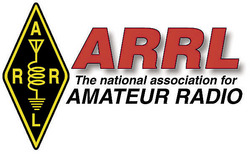 January meeting. After the January Board meeting, the Committee received and considered hundreds of comments from interested amateurs. The
January meeting. After the January Board meeting, the Committee received and considered hundreds of comments from interested amateurs. The 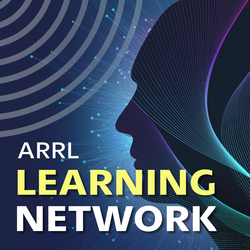 practiced by radio amateurs like himself who relay messages during emergencies, disasters, and other incidents that interrupt conventional telecommunications, including the internet. Through an overview of the ARRL National Traffic System, Hulett shared examples of preparing a radiogram and resources for finding traffic nets and other volunteers.
practiced by radio amateurs like himself who relay messages during emergencies, disasters, and other incidents that interrupt conventional telecommunications, including the internet. Through an overview of the ARRL National Traffic System, Hulett shared examples of preparing a radiogram and resources for finding traffic nets and other volunteers..jpg) a call for help, but it was only after 9 days of trying that they were able to get the attention of a radio amateur 1,900 kilometers (1,178 miles) away.
a call for help, but it was only after 9 days of trying that they were able to get the attention of a radio amateur 1,900 kilometers (1,178 miles) away.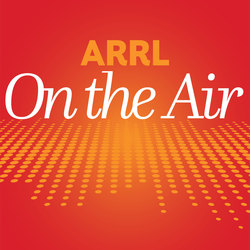 The latest episode of the On the Air podcast (Episode 7) features tips for soldering a PL-259 connector onto the end of a coaxial cable, and information on beginner courses for hams who want to serve their communities during disasters and other incidents. The On the Air podcast is a monthly companion to On the Air magazine, ARRL's magazine for beginner-to-intermediate ham radio operators.
The latest episode of the On the Air podcast (Episode 7) features tips for soldering a PL-259 connector onto the end of a coaxial cable, and information on beginner courses for hams who want to serve their communities during disasters and other incidents. The On the Air podcast is a monthly companion to On the Air magazine, ARRL's magazine for beginner-to-intermediate ham radio operators.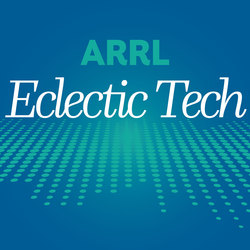 The latest episode of the Eclectic Tech podcast (Episode 13), available on Thursday, July 30, will feature discussions about Hellschreiber, wireless charging on the fly, and an interview with Paul Denisowski, KO4LZ, about the state of amateur Automatic Link Establishment (ALE).
The latest episode of the Eclectic Tech podcast (Episode 13), available on Thursday, July 30, will feature discussions about Hellschreiber, wireless charging on the fly, and an interview with Paul Denisowski, KO4LZ, about the state of amateur Automatic Link Establishment (ALE).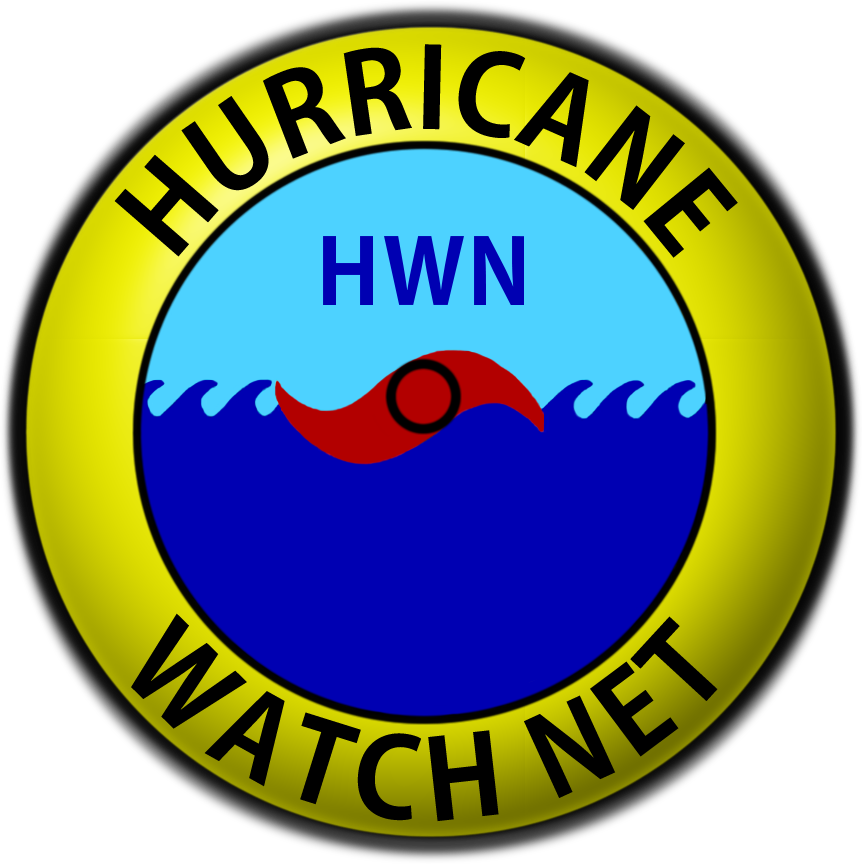 activating for Hurricane Gonzalo. Well, that storm had other ideas. The same can be said for what had been Tropical Storm Hanna in the Gulf of Mexico. All along, it looked as though this storm would make landfall as a tropical storm."
activating for Hurricane Gonzalo. Well, that storm had other ideas. The same can be said for what had been Tropical Storm Hanna in the Gulf of Mexico. All along, it looked as though this storm would make landfall as a tropical storm.".jpg) unlawful transmissions could interfere with key government and public safety services, like aviation systems," the FCC said. The ARRL EMC Committee and Lab also determined that potential interference to the secondary (transponder) air traffic control radar system on 1030 - 1090 MHz could occur.
unlawful transmissions could interfere with key government and public safety services, like aviation systems," the FCC said. The ARRL EMC Committee and Lab also determined that potential interference to the secondary (transponder) air traffic control radar system on 1030 - 1090 MHz could occur.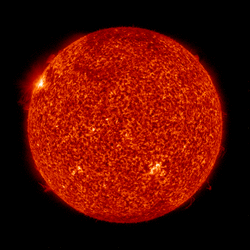 Average daily sunspot numbers rose from 3.1 to 14.1 this week, and average daily solar flux changed from 69.1 to 71.1.
Average daily sunspot numbers rose from 3.1 to 14.1 this week, and average daily solar flux changed from 69.1 to 71.1.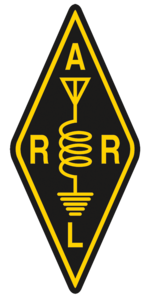 autobiographical information should appear exactly the same on all copies).
autobiographical information should appear exactly the same on all copies).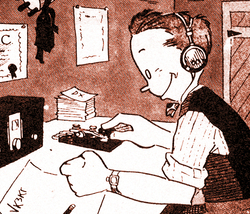 N4ZR, says the map feature may be offline from time to time as developers continue to work on it, and he'd like to
N4ZR, says the map feature may be offline from time to time as developers continue to work on it, and he'd like to 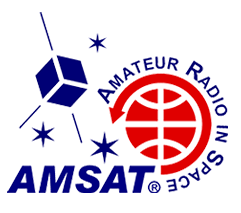 in for both education and the amateur radio community. The collaborative effort under AMSAT's engineering and operations teams has once again succeeded to bring another opportunity to AMSAT."
in for both education and the amateur radio community. The collaborative effort under AMSAT's engineering and operations teams has once again succeeded to bring another opportunity to AMSAT." purposes and encourage students to pursue STEM (science, technology, engineering, and math) careers. MESAT1 was awarded $300,000 from NASA. The project also received $150,000 in NASA Maine Space Grant Consortium funding for graduate student research. Folding in additional funding from UMaine and USM to support undergraduate student research brings the total funding to $522,000 over 3 years.
purposes and encourage students to pursue STEM (science, technology, engineering, and math) careers. MESAT1 was awarded $300,000 from NASA. The project also received $150,000 in NASA Maine Space Grant Consortium funding for graduate student research. Folding in additional funding from UMaine and USM to support undergraduate student research brings the total funding to $522,000 over 3 years..jpg) The ARRL Foundation has awarded a grant to the University of Alabama in Huntsville. The grant of $510 went to the school's Center for Cybersecurity Research and Education. The grant will be used to get university students licensed, and then integrate amateur radio communication protocols into extant models used for cybersecurity testing for industrial system controls. Analysis will be done on how well these protocols operate in this setting, their security, and their feasibility for use in real-world industrial situations. An independent IRS 501(c)(3) entity, the ARRL Foundation administers programs to support the amateur radio community, including scholarships for higher education, award grants for amateur radio projects, and special amateur radio program grants for The Victor C. Clark Youth Incentive Program and The Jesse A. Bieberman Meritorious Membership Program.
The ARRL Foundation has awarded a grant to the University of Alabama in Huntsville. The grant of $510 went to the school's Center for Cybersecurity Research and Education. The grant will be used to get university students licensed, and then integrate amateur radio communication protocols into extant models used for cybersecurity testing for industrial system controls. Analysis will be done on how well these protocols operate in this setting, their security, and their feasibility for use in real-world industrial situations. An independent IRS 501(c)(3) entity, the ARRL Foundation administers programs to support the amateur radio community, including scholarships for higher education, award grants for amateur radio projects, and special amateur radio program grants for The Victor C. Clark Youth Incentive Program and The Jesse A. Bieberman Meritorious Membership Program.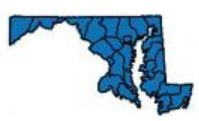 Ham radio assisted a pedestrian in distress in the ARRL Maryland-DC Section. A Baltimore radio amateur has an alert member of the Anne Arundel Radio Club (
Ham radio assisted a pedestrian in distress in the ARRL Maryland-DC Section. A Baltimore radio amateur has an alert member of the Anne Arundel Radio Club (.jpg) The COVID-19 pandemic continues to complicate amateur radio license testing. ARRL Volunteer Examiner Coordinator (VEC) VE Jim Rinehart, K9RU, reported having to break a July 11 test session at the Salvation Army EDS Center in Indianapolis into two 90-miniute segments in order to meet COVID-19 guidelines, requiring the additional step of having to notify applicants as to which test session they belonged. For the split session, one member of the testing team checked applicants' temperatures, while three VEs signed them in, checked their paperwork and calculators, and collected the exam session fee. "We have a packet for each applicant with the test and answer sheet prepared, and we go over it with them," Rinehart told ARRL VEC. "To minimize the handling of paperwork, we have the applicant turn in the answer sheet to the VE graders and throw away the exam booklets." Rinehart said exam session tables are disinfected between test sessions. Face masks and social distancing are required.
The COVID-19 pandemic continues to complicate amateur radio license testing. ARRL Volunteer Examiner Coordinator (VEC) VE Jim Rinehart, K9RU, reported having to break a July 11 test session at the Salvation Army EDS Center in Indianapolis into two 90-miniute segments in order to meet COVID-19 guidelines, requiring the additional step of having to notify applicants as to which test session they belonged. For the split session, one member of the testing team checked applicants' temperatures, while three VEs signed them in, checked their paperwork and calculators, and collected the exam session fee. "We have a packet for each applicant with the test and answer sheet prepared, and we go over it with them," Rinehart told ARRL VEC. "To minimize the handling of paperwork, we have the applicant turn in the answer sheet to the VE graders and throw away the exam booklets." Rinehart said exam session tables are disinfected between test sessions. Face masks and social distancing are required.







